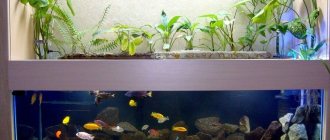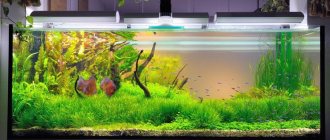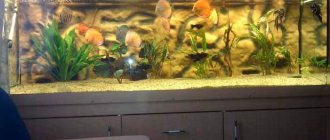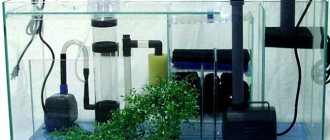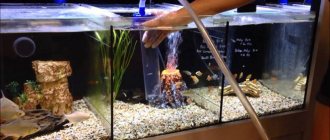Nowadays, water purification with ozone is one of the most effective ways to get rid of unwanted impurities. It also prevents infection by various microorganisms. This method is used at stations in populated areas, but there are special household installations and equipment for country houses.
General information and purpose
A huge advantage of water purification by ozonation is its extensive practical experience in use (more than a hundred years). This method was first used by French specialists. They needed to improve the water quality in the municipal system. As practice has shown, this method has enormous advantages when compared with analogues:
- Ozone oxidizes much faster than pure oxygen.
- The extraction of the reagent occurs quickly and without extra cash costs.
- Gas allows you to transfer all suspensions (for example, iron) from solution to sediment, so that impurities are removed using simple mechanical methods.
- If the duration of exposure to the ozonizer was sufficient, then high-quality disinfection occurs, which destroys all bacteria and other pathological objects.
- Processing removes all tastes and odors.
- The gas decomposes quickly, so the chemical composition of the water does not change.
Some experts claim that the ozonizer reduces scale formation. But still, ozonation cannot qualitatively block this process. To do this, it is better to use specialized technology, for example, ion exchange.
Principle of operation
When using an ozone water filter, the reagent reacts with various pollutants that are in the liquid. The process itself is somewhat reminiscent of the absorption of vapors by water, but this purification is more complex.
The main method of extracting ozone for its further use in a water purifier is the synthesis of oxygen from air. This method made it possible to popularize ozonizers. Their principle is that cold air (below 6 degrees Celsius), entering the vessel, leaves some moisture with oxygen.
The oxygen is then dried and sent to an ozone generator, where strong electrical charges are used to convert the gas into ozone. It then travels through glass tubes to a location where it mixes with air. The use of other material for tubes is unacceptable because it oxidizes quickly. Glass does not enter into a chemical reaction for about 5-6 minutes. In some cases, ozone installations use two generators for double cleaning.
Reactor - a system of separate reservoirs into which water is supplied using pumps to carry out the cleaning process. The first stage involves oxidation in the main compartment, after which the mixture of air and ozone passes into the reserve tank. There there is contact with untreated water.
Purifying water using ozonation has a large number of advantages, including the ability to redirect the liquid during the process. To obtain ozone you do not need to spend a lot of money. Only electricity is consumed. To produce 1 kg of ozone, only 18-20 kW of electricity is needed. And if you use air instead of oxygen, this figure can be partially reduced.
In industrial units, ozone is often passed through a large layer of the liquid being purified. The main condition for compliance with the technological process is the uniformity of gas passing through the volume of water.
In ozone installations with low productivity, the injection method is used, since it is considered the most effective. In the process, water passing through the injector creates a dilution effect, due to which a sufficient amount of ozone enters the container.
After mixing the reagent in the injector, the ozone is divided into very small bubbles. This allows the gas to dissolve in the liquid.
Advantages and disadvantages
This method of water purification is used quite often. It has its advantages and disadvantages. The main advantages include:
- quick cleaning;
- removal of various impurities and heavy metals from water;
- destruction of harmful organisms;
- preservation of the chemical properties of water.
The remaining ozone disintegrates very quickly and turns into oxygen. This allows you to get rid of tastes and odors.
But this method also has its drawbacks. Ozone cannot be stored or transported. It must be produced directly at the point of use. Other disadvantages:
- To effectively remove contaminants, long-term contact of gas with water is required. In this case, phenolic compounds are released, which decompose poorly.
- To produce the reagent, oxygen or prepared air is required.
- An ozonator is required. The cost of the equipment is quite high.
If there are phenolic compounds in the liquid, then the water is not completely safe. Additional processing is required. It must be borne in mind that ozone is a very strong oxidizing agent. Exceeding the dosage can have a bad effect on human health.
If ozone affects the body for quite a long time, then there is a possibility of developing pathologies of the respiratory system. Therefore, such a substance must be used carefully. Another disadvantage is that ozone filters are quite expensive, and if the water is too dirty, it will take longer to clean.
How to keep it clean?
To maintain the crystal purity of water in the aquarium, in addition to the measures described above, experienced aquarists recommend the following measures:
- Cover the aquarium with a lid of a suitable size to prevent dust and dirt from getting inside. But at the same time, for normal air exchange it is necessary to leave a small gap.
- Constantly monitor “population density.”
- Rationize food. It is easy to determine the required portion for a “one meal” experimentally and stick to it in the future.
- Regularly inspect the aquarium, monitor the state of the ecosystem, and immediately get rid of dead algae and dead fauna. You should also not allow any objects or substances that are not intended for the aquarium to get into the water.
- Everything that is planned to be placed in the aquarium (soil, decorative elements, new algae) should be thoroughly washed beforehand, and if this is permissible, also disinfected (for example, in boiling water).
- Monitor the temperature and the length of daylight hours.
- Plant algae that are easy to maintain, not prone to active growth and capable of purifying water - for example, hygrophila, vallisneria, ambulia.
Important!
Sand is not the most suitable soil for an aquarium. It is this that often produces sediment, which causes cloudiness in the water. It is strongly not recommended to fertilize the substrate at the bottom unless absolutely necessary.
Main types
Ozone purifiers are available for industrial and household use. They can have different power and size. Special installations have also been developed that are designed for ozonizing water from a well.
In private homes, this cleaning method is extremely rarely used. The installation is compact in size, but does an excellent job of filtering liquid from wells or wells. Ozone is able to interact with heavy metals, iron, manganese, organic matter and hydrogen sulfide.
The water that passes through the ozone unit enters a filter in which the main component is activated carbon. Here the liquid is purified from contaminants precipitated by the reagent. Activated carbon in this case does not act as an absorbent.
The filter can be changed rarely, but it should be washed regularly. On average, the procedure is performed once every six months.
There are also ozonizers for aquariums. Plants and fish produce a lot of organic waste. Because of this, living beings may die. To eliminate contamination, you can use a small aquarium device that allows you to saturate the water with ozone.
Ozone decays very quickly. If it is used correctly, the inhabitants of the aquarium will not be in any danger. The substance will remove all unwanted impurities and destroy pathogenic microflora.
But it is very important that the device works properly and correctly. Excessive concentration of the reagent can damage the gills, which will lead to the death of the fish. Monitoring should be carried out regularly using a test kit.
Industrial installations are large. They are used to purify drinking water before the liquid enters the city water supply system. Such equipment is characterized by increased productivity.
What are the benefits of using ozonizers?
Clear water is the #1 reason for most people who use ozonizers. Dissolved organic matter discolors water, ozone oxidizes and purifies it. This is especially useful for reef aquariums where lighting is critical. Many people don't even realize how cloudy the water is until they see the results of ozone. This gas also has disinfectant properties.
Pathogenic bacteria, single-celled parasites, greens and viruses are destroyed upon contact with ozone. Many species of living beings secrete special protective substances. They are designed to protect against predators or competitors. Substances accumulate over a long period of time and become a problem for the ecosystem. They are also destroyed by ozone.
[sam_ad id=»22" codes=»true"]It neutralizes pesticides, detergents and many other toxins that can end up in tap water. Ammonia and nitrites are oxidized into less harmful nitrate when exposed to ozone. And, as mentioned earlier, the use ozone can reduce the amount of water that needs to be changed in closed systems.
Making a device yourself
If you have the desire and certain knowledge, you can make an ozone installation yourself. To assemble, you must have at least basic electrician skills.
The following materials should be prepared:
- glass 3 mm thick;
- foil;
- 12 V power supply;
- can;
- high voltage generator;
- insulating tape;
- sealant;
- plastic container;
- copper wires in insulation;
- plastic tubes.
The end of the wire is stripped and laid on the glass. Foil is glued on top. Now you need to attach four plastic supports with rounded ends to the can. Glass supports must be secured to them so that the distance between the glass and the tin can is ½ mm.
A second electrode is attached to the edge of the jar. Now you need to do a test run. A bluish glow should appear between the foil layer and the tin container. If this happens, you can move on to the next stage.
At the bottom of the jar you need to make a hole, the cross-section of which corresponds to the diameter of the hose. The stripped end of the wire and the spring are soldered to the center.
The jar and glass are secured together. The glass is then placed on the bottom of the plastic container. It is necessary to make holes in the cover through which wires and hoses will be supplied. In this case, the plastic container serves as the outer casing. It must be carefully sealed.
After the sealant has hardened, the power supply, compressor and generator are connected. Ozonation should be carried out in a ventilated area, as this gas can burn the respiratory tract and lead to poisoning.
Price list*
| № | Model | Power (mgO3/hour) | Power (W*h) | Price, rub.) |
| 1 | B-100-AQUA | 15-100 | 2 | 36 000,00 |
| 2 | B-300-AQUA | 45-300 | 6 | 37 000,00 |
| 3 | B-500-AQUA | 65-500 | 8 | 38 000,00 |
| 4 | B-1000-AQUA | 150-1000 | 12 | 44 000,00 |
Delivery and payment information
Proper use of ozonated water
There is no specific dosage for the amount of ozonated water consumed. The main condition is that the proportions must be respected. Therefore, you can drink the purified liquid as much as you like. It is best to drink a glass of ozonated water an hour before meals. It should also be remembered that its benefits do not last long, which is why it is recommended to drink water immediately after ozonation.
Ozonated liquid has a large number of useful properties that have a beneficial effect on the human body.
